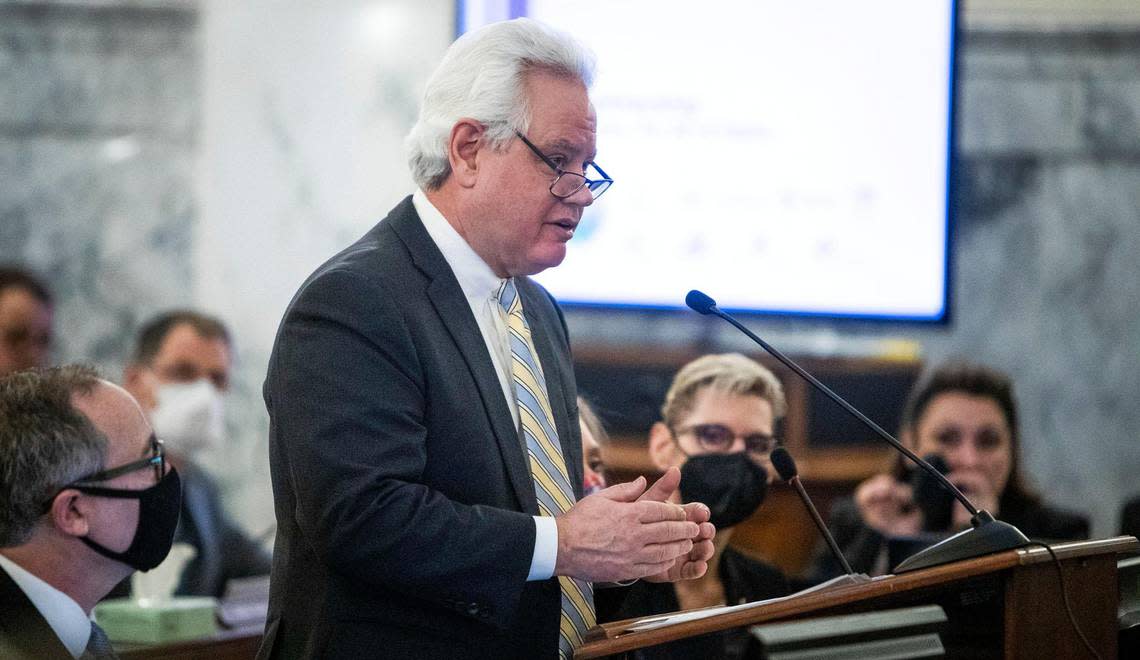Is the University of Phoenix deal a disaster in waiting for Idaho taxpayers? | Opinion

It’s becoming clearer every day that the officials who are supposed to be safeguarding Idaho taxpayer dollars are not considering the possible train wreck that could be coming with the purchase of the University of Phoenix.
The Idaho State Board of Education held only a few closed-door meetings with University of Idaho President Scott Green and then met for only 90 minutes in a public meeting to make a decision to purchase the University of Phoenix for $550 million.
The purchase price would be funded by a $685 million bond offering, which would be paid back, ostensibly, by revenues generated by the University of Phoenix.
Green has said that the maximum downside risk is a $10 million annual payment for a maximum of five years if Four Three Education is unable to make bond payments. Four Three Education is the nonprofit organization created to be the owner of the University of Phoenix. Given that there was so little debate on the purchase, and State Board of Education members asked so few questions in their sole 90-minute public meeting, it’s clear that State Board members are relying heavily on Green as their source for information.
We have nothing against Green, but when it comes to a $685 million decision, there should be a lot more scrutiny and public testimony.
We have seen more public scrutiny and public testimony for the annexation of Avimor or the Boise zoning code rewrite than we have for this massive deal.
Let’s put this in perspective: the University of Phoenix’s 85,000 students are greater than the student population of University of Idaho, Boise State University, Idaho State University, Lewis-Clark State College, North Idaho College and College of Southern Idaho combined.
The $685 million debt offering is the equivalent of eight years of the Idaho State Police budget.
Idaho Gov. Brad Little this week touted the benefits of the purchase of the University of Phoenix, including potential revenues and a robust online platform for delivering education. These are true and undeniable.
But when it comes to the potential downside, Little parroted what Green has said about the maximum downside.
“What I understand is that the purchase and sale agreement will basically limit the payment — the exposure — to $10 million a year,” Little said when asked if he’s concerned about the downside risks of the purchase.
When asked if he’s confident in that assumption, he returned to talking about the potential upsides to the deal.
No doubt, if all goes according to plan, the upsides are significant.
But not enough consideration is being given to the risks, such as future loan forgiveness, declining enrollment or a decrease in revenues and operating profit.
We’re not convinced that just because the University of Idaho will commit to paying only $10 million per year for five years, bondholders would be satisfied by that.
Rather, more than likely, bondholders would sue, naming the University of Idaho, the Idaho State Board of Education and the state of Idaho as defendants.
Is that an extreme scenario? Perhaps. But it’s a distinct possibility. The problem is that no one who should be talking about it is talking about it.
The State Board of Education members are not asking these questions, and based on his answer this week, Little isn’t asking these questions, either.
The Legislature up until now has been shut out of the process, yet legislators are the ones who would be asked for the money if it’s determined that the state is on the hook.
On Thursday, the Idaho House State Affairs Committee introduced a bill that would involve the Legislature in the purchase.
“This particular acquisition ... was done primarily behind closed doors,” Rep. Brent Crane, R-Nampa, said Thursday. “As the Legislature, we’re responsible for debt. We’re responsible for expenditures, and yet we were not dealt into this process at all.”
Idaho State Board of Education members, who are appointed by the governor, owe the taxpayers a more thorough and transparent vetting of the purchase of what would be the largest university in the state of Idaho.
We call on board members Linda Clark, William Gilbert Jr., David Hill, Shawn Keough, Kurt Liebich, Cally Roach, Cindy Siddoway and Superintendent of Public Instruction Debbie Critchfield to hold a public hearing — with public testimony — to discuss the deal and go over the details.
If Green and others supporting this deal can defend their position and adequately address the concerns, then all the better.
If not, someone needs to pump the brakes on this deal.
The potential upside is tantalizing, but the potential downside is too big to ignore.
Statesman editorials are the unsigned opinion of the Idaho Statesman’s editorial board. Board members are opinion editor Scott McIntosh, opinion writer Bryan Clark, editor Chadd Cripe, newsroom editors Dana Oland and Jim Keyser and community members Mary Rohlfing and Patricia Nilsson.
